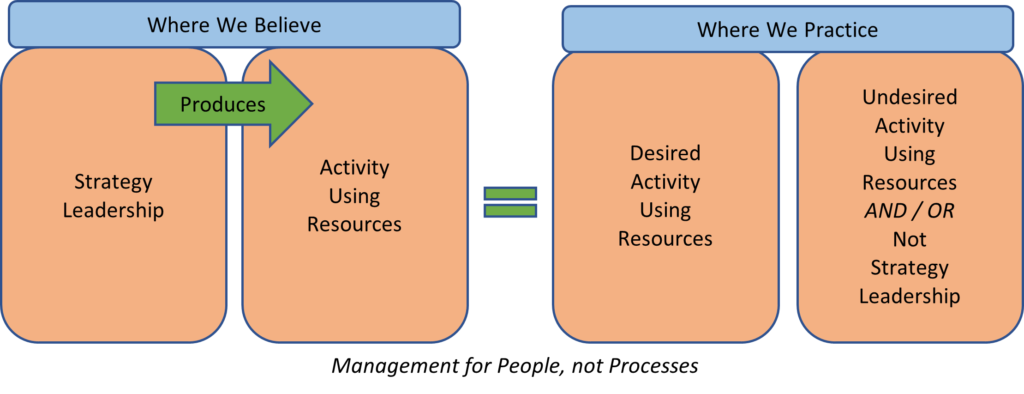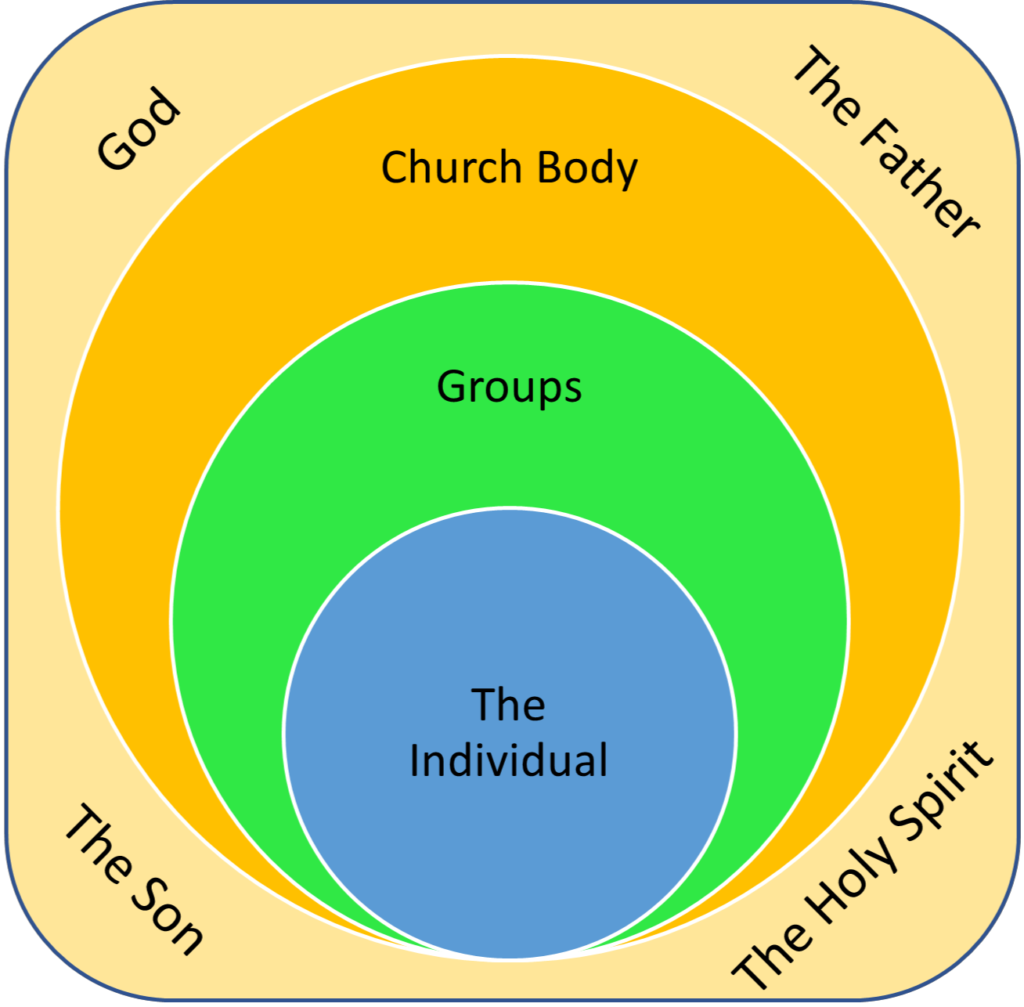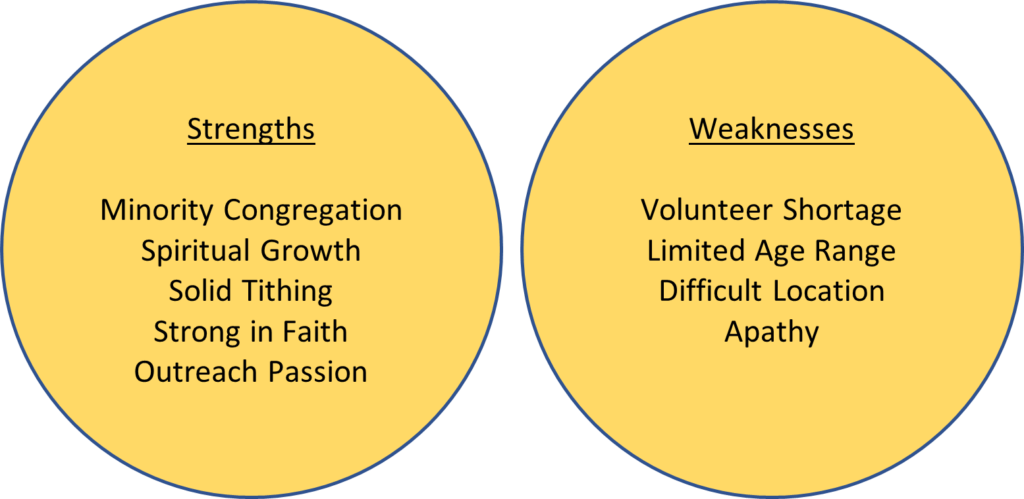Organized Action for Discipleship Ministries

Connect with me
‘From the Abundance of the Heart, Speaks the Mouth’
Regarding the graphic, ‘Out of Strategy and Leadership, Resources facilitate Activity’. In mathematics it is possible to see all results of the ‘If -Then’ formula. I break it down into 3 resulting areas and I use this formula to perform root cause analysis and to orderly develop strategy process.
This page addresses the Heart and Speech part of the formula. The Abundance addressed the topics of Vision, Mission, and Values. It is the crucial 1st step. The next step is to get a realistic picture of what the heart looks like and its ideal state. The Heart expresses itself in Speaking. The activities and speech of the organization and its individuals reflect the current state of affairs. How are things now compared with the ideal (goals)? Strategy will be tailored according to the organization and its individuals.
… the Heart, Speaks …

My Strengths
I am organized and administratively inclined and find that these areas provide meaningful servant leadership. Good strategy requires data collection in a way that can be reviewed meaningfully. There needs to be a system that collects data and can report it. I have served as General Manager, Sales Manager, Customer Service in the service industry and know firsthand how important it is to listen to others. When listening for understanding occurs, connection with people is strengthened.
I create, innovate, and generate ideas using available data such as text, patterns in numbers, music patterns, demographic studies, and philosophy. In regard to people, I use their feedback to organize ideas. In whatever I do, I want to make a difference with people, not simply for the sake of process. This happens in all areas of recruiting, unifying, multiplying, developing, and implementing processes for people.
My strengths in management are in the Planning and Controlling phases.
Analysis
Analysis includes many things. Here I want to keep things simple and attached to strategy. It is also efficient to recognize that part of analysis is fact finding, but these facts are tied to questions that need to be asked with some sort of ideal. In the end, data collected and reported should be relevant and meaningful.
Leadership requires on purpose actions with purpose. Ideals, or goals, help others grow from their current state towards the ideals, within the framework of the Vision, Mission, and Values.
Take some time to consider ‘what is’. I call it the ‘speaking’ part. How is the body of the church speaking and behaving? What are they involved in? What are they like? What and how do they share with others? What is growing and not growing, and why? Who is growing / not growing in the church, how, and why?
Speaking is a result of belief that has been filled with some sort of abundant message and leadership. All actions are results of leadership and the vision, mission, and values. There will be strengths and weaknesses. Know where people are, envision where you would like them to be, and then lead them there under the enablement and help of the Holy Spirit.
Lifecycle
Organisms and Organizations have lifecycles. This applies on a macro and micro scale. It is important to evaluate the church body as well as individuals. That may sound cold here, but it’s not. It’s shepherding on purpose with purpose. Everyone needs Christ. Individuals have unique needs.

What lifecycle stage is the church body in?
* What lifecycle stage is each group of the body in?
** What lifecycle stage is each individual in?

After considering their current state, what is the desired state? Who is accountable, or the leader, for each of these? What metrics can you involve that lead to growth? How and where will you track them? Who in leadership will be included?
How does the church connect? Hierarchy? Groups? Individuals? Is connection working properly? What is desired? What tools are being used? Are they being used?
Strengths and Weaknesses, Capabilities Analysis
What are the strengths and weaknesses of the church, the resources, and the people? (The S.W. in S.W.O.T. analysis)

This is difficult and should only be shared with wisdom. This is judgement to many people. In fact, it is discernment for Leadership. Leaders do things on purpose to move people from one state of being to another state of being. The sheep don’t know the grass of the field is nearly eaten up, but the shepherds should. If the shepherd leads the sheep to another full field of grass, the sheep can keep eating. If this isn’t done, leadership will falter and die. When that happens, nothing changes and eventually the church begins to die as well. Don’t let that happen! Act and teach leaders how to do this, how to track and monitor, and how to share with wisdom. It requires wisdom and the Holy Spirit helps with that.
For the church in general, what are the strengths and weaknesses?
* For each group, what are strengths and weaknesses?
** For each individual, what are their strengths and weaknesses?

What resources are available for people? Is there a library in the church? How do members know what material to look for and by who with what kind of philosophy? What kind of groups are available? Are they taking new members? Are there other churches in the community that can help as needed? Are there enough teachers? Is there teacher training? What kind of training is required? Who is equipped to help who? Who could be equipped? Each need requires special attention, the pastor is unable and not equipped to address and shepherd them all. Is there a food pantry, a place for battered women, a homeless shelter? Needs extend beyond the spiritual. Sometimes there are hidden members who can help, sometimes a church has something set up, and other times it’s referring to a community organization like the Salvation Army.
Listing resources not only helps people, but it also identifies how to get individuals involved in receiving and giving service according to their unique characters. I would recommend a general training class that covers the Vision, Mission, and Values of the church as well as what it means to serve and what Christ expects or is pleased by.
People Resources
PEOPLE SUPPORT WHAT THEY ARE A PART OF CREATING. Get a list together somewhere of strengths and offerings the individuals and groups are available for and use them when you can.
RED FLAG WARNING! Be cautious if:
- All opportunities for service are in the greeting ministry
- The Pastor or Elders ‘do most everything’
What are the abilities, spiritual gifts, and spiritual desires of the church?
* What are the abilities, spiritual gifts, and spiritual desires of groups?
** What are the abilities, spiritual gifts, and spiritual desires of each person?

Demographics
Demographics is going to consider many things. Generally, it is detailed information about people grouped into meaningful and actionable categories. How we interact with people is dependent on understanding them genuinely. Use demographic information to engage with people while remaining firm in the truth. I will not detail that here; likely it is covered in a different way in seminary training and other special classes. (I would recommend classes like this as groups, but it is a very tailored kind of training with attention and discernment to special needs of people).
What does the church have a heart for? This is the bottom line to consider here. Leaders may want and need to lead a church out of its desires towards something else. Often, leaders can recognize good desires and strengthen the church to lean into them to make them even more effective. Some desires have been twisted; others have been ignored. It is important that leaders recognize good desires, even ones that don’t agree with their own, and feed the body in denial of themselves. Good leaders often find that denial for the sake of Jesus usually provides better results and less burden.
Church leaders, what does the church body have a heart for? What is the feedback from individuals and group leaders?
* Group leaders, what does your group have a heart for?
** Individuals, what do you have a heart for?

In every case, pray about and seek wisdom about what these desires are and test them in Scripture. Some require repentance and change, others require nurturing. After seeking the Lord in prayer, He will help you in community. Work these out with others.
Wrap Up
When analysis is performed with notes about ‘what is’ and notes about ‘what should be’, it is time to compare and consider. Knowing the vision, mission, and values, brainstorm ways on how the church can grow. Some areas simply need nurturing, others need to be pulled, and still others need shepherding attention.
What should stay the same? What should change? What should go away? Another way of looking at this last question is to ask, ‘If this program/group/material’ went away, would anyone notice? Should they?’.
Develop plans from the ideas and start putting timelines on them. Cleaning the bathroom may take a day while implementing a food pantry may take a year. Have metrics! Use them to shepherd and make wise decisions in consultation with the Holy Spirit in prayer.
The MOST IMPORTANT thing a church can do to grow is to involve the people! Don’t lead them into self-help, lead them into self-sacrifice according to scripture, local church vision, mission, and values, with meaningful and appreciative leadership. People support what they are a part of creating. This is sustainable action.
OR